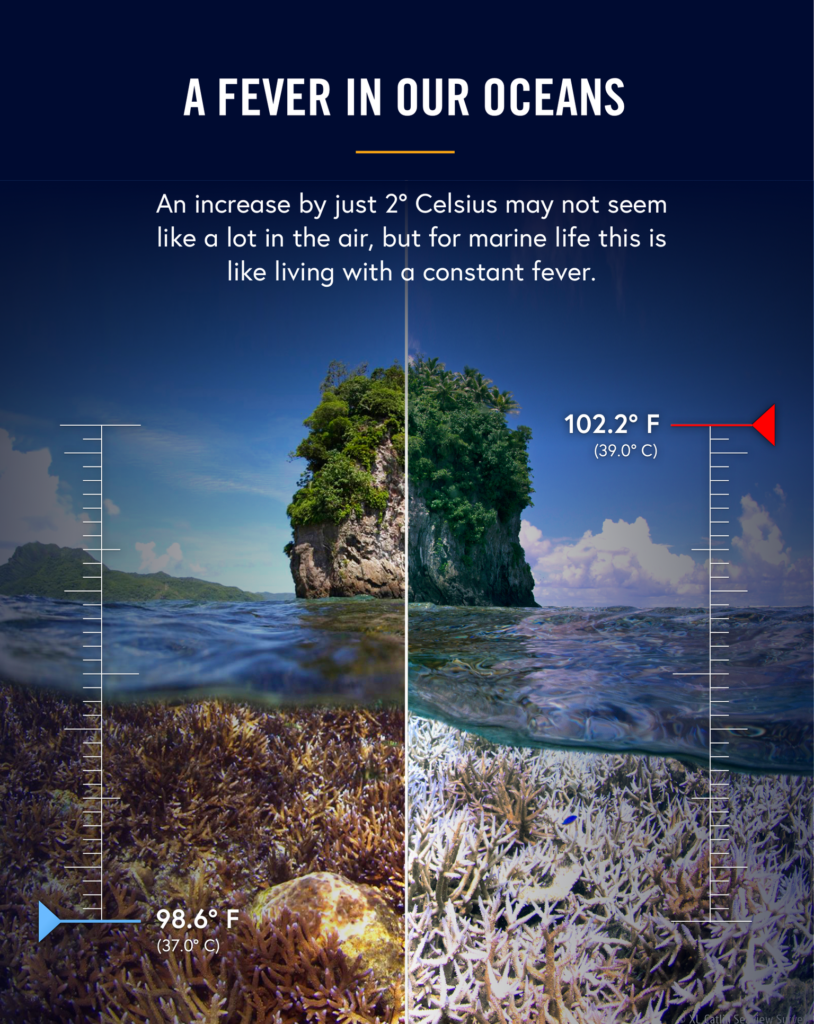Don’t Miss Chasing Coral
I had the chance to see the film Chasing Coral at our local government center in Key Largo just moments after it was released last week. Being a diving community I wasn’t surprised to see a packed house for the world premiere. Sure, I could have streamed it at home on my couch, it’s on Netflix, but it was so much more powerful to share it with the ocean loving community here. Wherever you watch it, have some tissues handy, it’s tough to watch.
Corals are dying off at an unprecedented rate due to climate change and rising ocean temperatures. There’s no denying this fact. If we don’t make serious changes as a planet, all coral could be gone in the next 30 years. Did you know coral has no defined lifespan? It will continue living for as long as the environment supports it. That last part is key because the ocean is becoming an increasingly hostile place for corals to live.
Corals are the backbone of a healthy ocean and we can’t afford to lose any more. 25% of all sea life gets its start on the reef. Without reefs, a healthy ocean isn’t possible and once the health of the ocean is lost the planet’s health will be close behind.
Coral Bleaching & Rising Ocean Temps
Rising sea temperatures stress and eventually kill corals. The below infographic sums it up perfectly. Imagine living with a 102 degree fever. At first you’d feel tired, achy, and generally ill. As time went on your body would begin shutting down until you eventually die. That’s what happening in our oceans. Coral’s first response to a temperature rise is bleaching which they can recover from if the water temperature decreases quickly enough. Bleached coral is still alive but sadly most don’t survive a bleaching event. Mass bleaching events have risen sharply over the past ten years and in 2016 alone 29% of the Great Barrier Reef died due to bleaching – that’s one year – 29% of the largest reef system in the world was lost. We can’t afford to lose any more.

Get Involved!
Now that you know what’s going on don’t stand by without taking action. Here are just a few ways you can help.
- Stand behind clean energy initiatives. Wind, solar, electric cars – reducing carbon emissions lessens climate warming. Call & write to your leaders and let them know you want clean energy now!
- Support one of the many organizations working to restore the health of our planet and oceans. The Coral Restoration Foundation is right around the corner from us and has nurseries across the Caribbean. We’ve worked with them during their annual Coralpalooza event and we’re in the process of becoming regular volunteer divers with them. They are a great organization to support!
- Share the knowledge! The more people that are aware the more help and support the oceans will have.
- Reduce your carbon footprint.There are a million ways to do this, big and small.
- Don’t use sunblock with oxybenzone on the ingredient list, it kills corals. I don’t wear any sunblock, I wear a hat and a long sleeve rash guard. If you need it, there are some great coral safe products on the market now, check out Stream2Sea.
It’s not too late!
Until the last coral dies there’s still hope for our reefs! Every day we have the chance to reduce or impact with the choices we make. I love the ocean and spend as much of my free time in, on and around it as possible. I dive the reefs here every chance I get. Reefs are magical places packed with life in every crevice. I never get tired of exploring them. To think it might all be gone in 30 years is absolutely heartbreaking.
Get involved for yourself, for future generations, for the health of our planet and for all of the incredible creatures we share it with!
Until next time…
Stay Warm Friends (but not too warm!).

Pingback: Coral Death in Key Largo | Go Where It's Warm